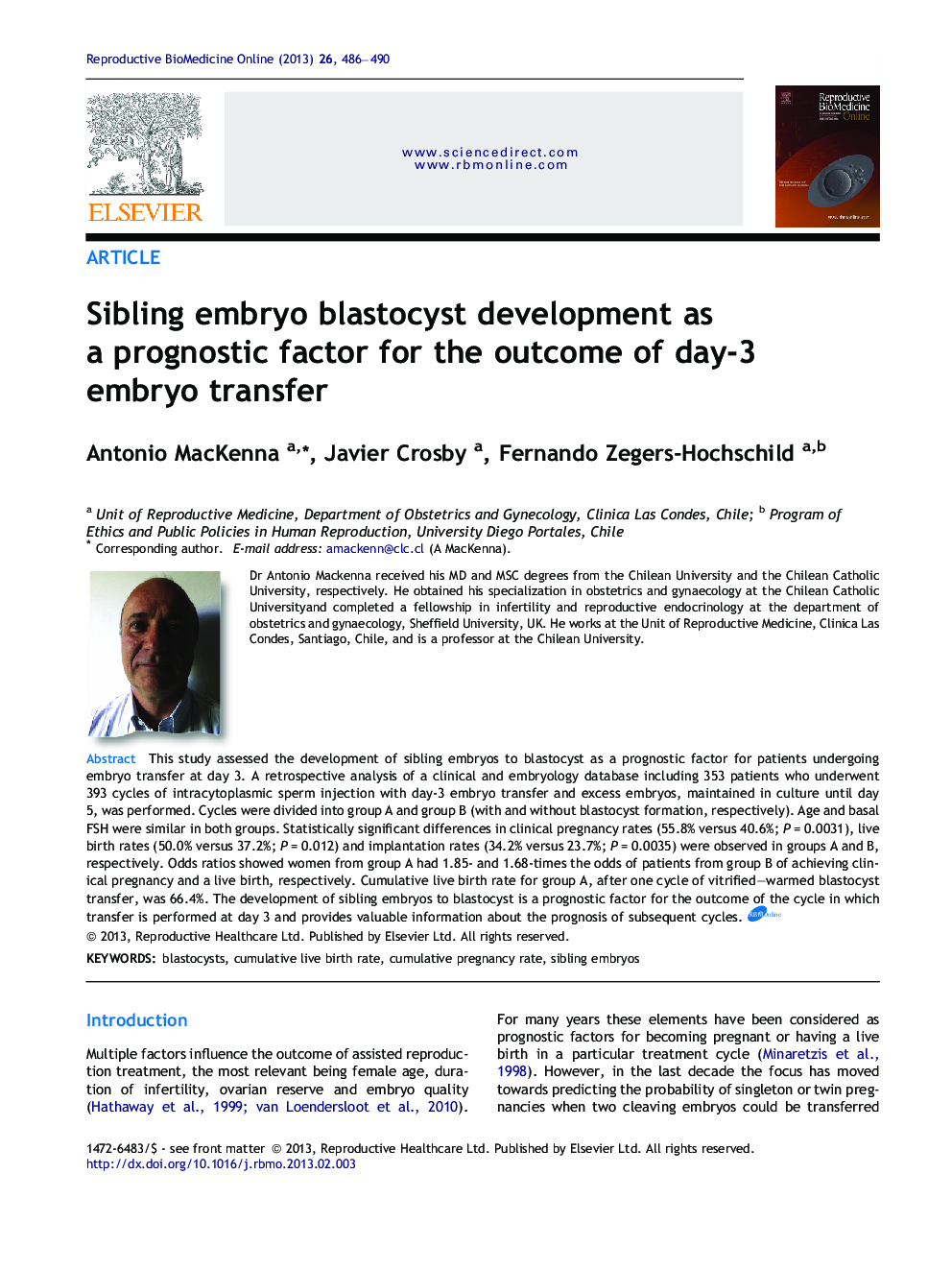| Article ID | Journal | Published Year | Pages | File Type |
|---|---|---|---|---|
| 6189125 | Reproductive BioMedicine Online | 2013 | 5 Pages |
This study assessed the development of sibling embryos to blastocyst as a prognostic factor for patients undergoing embryo transfer at day 3. A retrospective analysis of a clinical and embryology database including 353 patients who underwent 393 cycles of intracytoplasmic sperm injection with day-3 embryo transfer and excess embryos, maintained in culture until day 5, was performed. Cycles were divided into group A and group B (with and without blastocyst formation, respectively). Age and basal FSH were similar in both groups. Statistically significant differences in clinical pregnancy rates (55.8% versus 40.6%; PÂ =Â 0.0031), live birth rates (50.0% versus 37.2%; PÂ =Â 0.012) and implantation rates (34.2% versus 23.7%; PÂ =Â 0.0035) were observed in groups A and B, respectively. Odds ratios showed women from group A had 1.85- and 1.68-times the odds of patients from group B of achieving clinical pregnancy and a live birth, respectively. Cumulative live birth rate for group A, after one cycle of vitrified-warmed blastocyst transfer, was 66.4%. The development of sibling embryos to blastocyst is a prognostic factor for the outcome of the cycle in which transfer is performed at day 3 and provides valuable information about the prognosis of subsequent cycles.This study assesses the development of sibling embryos to the blastocyst stage (day 5 of in-vitro culture) as a prognostic factor for patients undergoing embryo transfer at day 3. For this purpose a retrospective analysis of clinical and embryology database coming from 353 patients who underwent 393 cycles of intracytoplasmic sperm injection with day-3 embryo transfer and excess embryos was performed. Sibling embryos were cultured until day 5. Cycles were divided in group A and group B (with and without blastocysts at day 5, respectively). Age and ovarian reserve were similar in both groups. Statistically significant differences in pregnancy rates (55.8% versus 40.6%), live birth rates (50% versus 37.2%) and implantation rates (34.2% versus 23.7%) were observed between group A and group B, respectively. Statistical analysis showed that the chances of becoming pregnant and having a live birth rate were 1.85- and 1.68-times more in group A than in group B, respectively. Cumulative pregnancy rate and live birth rate for group A, after one cycle of vitrified-thawed blastocyst transfer, were 74.5% and 66.4%, respectively. It is concluded that development of sibling embryos to the blastocyst stage is a prognostic factor for the outcome of the cycle in which transfer is performed at day 3 and provides valuable information about the prognosis of subsequent cycles.
